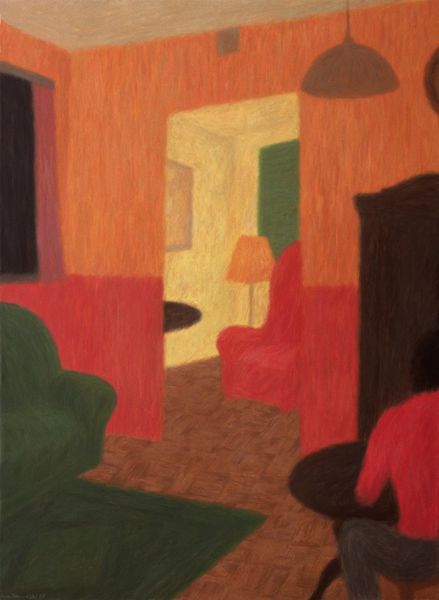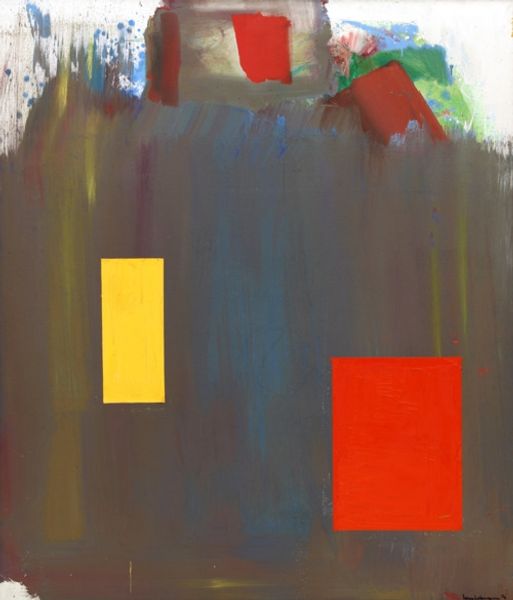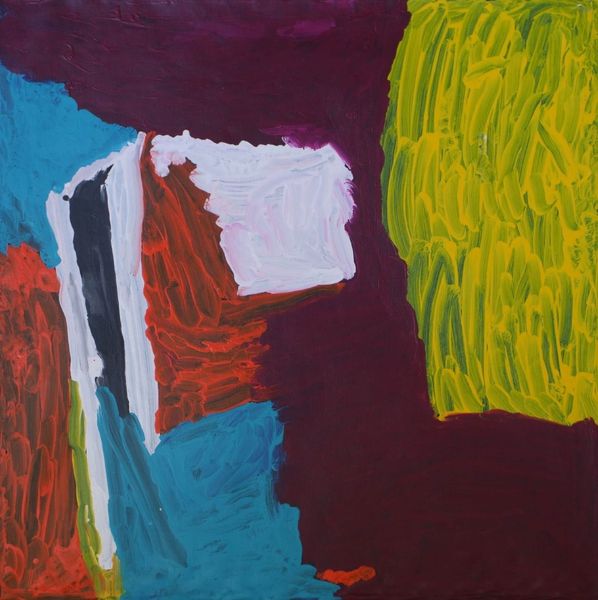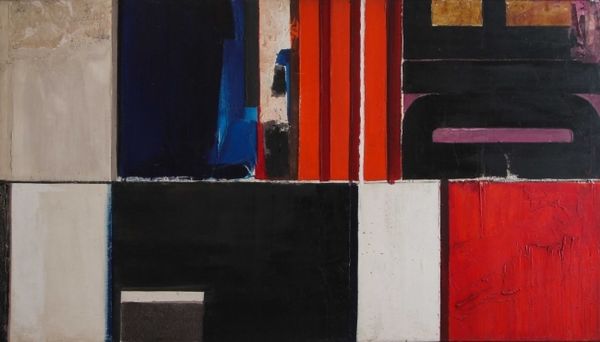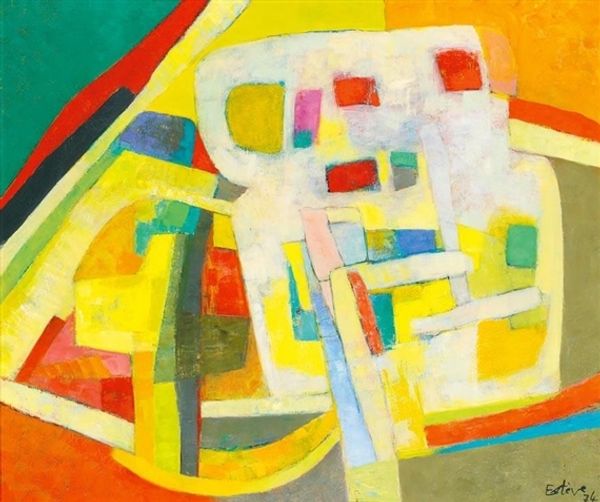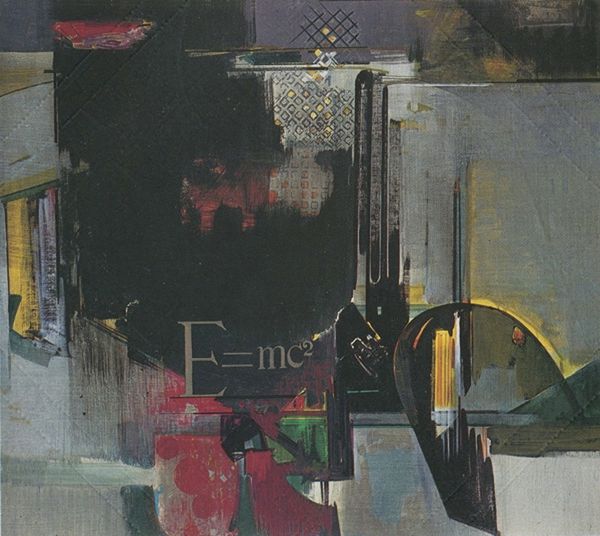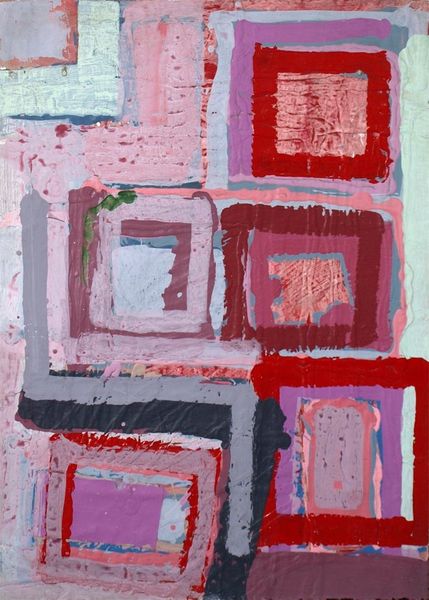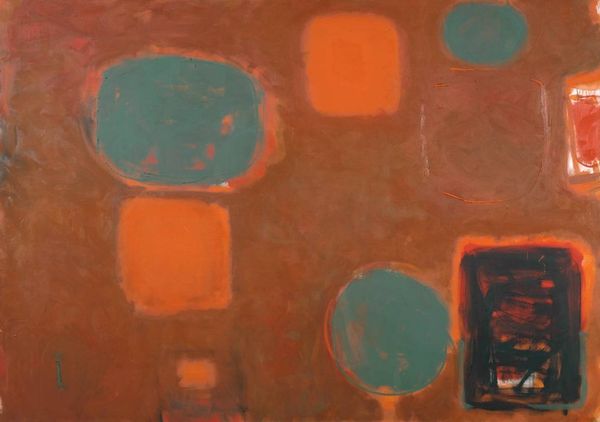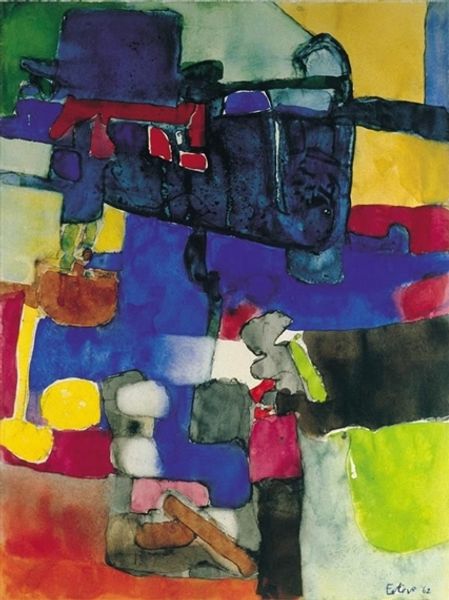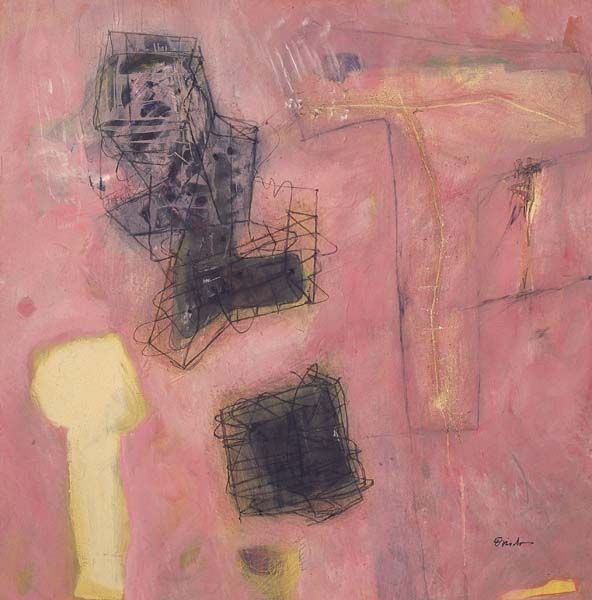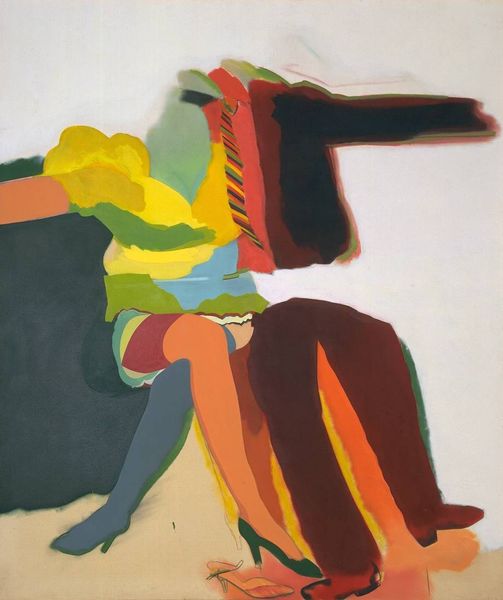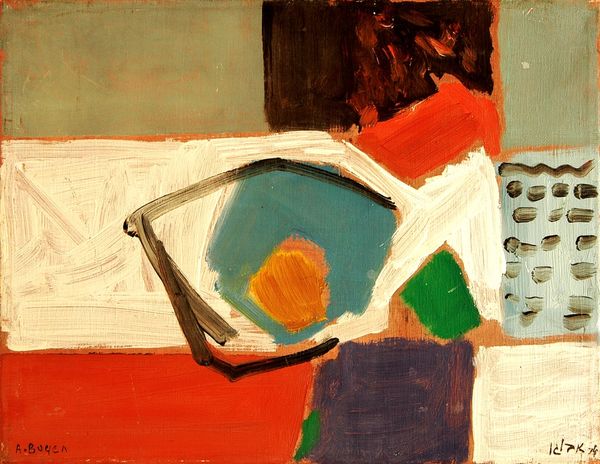
Copyright: Alexander Bogen,Fair Use
Editor: Here we have Alexander Bogen’s "Cubistic Still Life," created in 1979 using acrylic paint. The bold colours and sharp geometric forms feel almost aggressive. What strikes you when you look at it? Curator: It's interesting you pick up on that aggression. Bogen painted this later in his life, after experiencing incredible upheaval and loss as a Jewish artist during the Holocaust. Can we really separate this piece from that historical context? This work reflects the fragmentation of identity in the wake of such trauma. Look at how the traditional still life is broken apart – the flattening of space and colliding planes reject established notions of order. Editor: I see that now! So, the bright colours aren’t just aesthetic; they're almost… defiant? Curator: Exactly! Colour can be a powerful form of resistance. Consider, too, the role of abstraction in modernism. For marginalized artists, abstraction could be a means of creating art that resisted easy categorization, circumventing oppressive structures that policed representation. How do you see that playing out here? Editor: So, it’s like the artist is saying, “You can’t define me,” even through the artwork itself? And by refusing to conform to artistic conventions, the artist reclaims their agency? Curator: Precisely. The act of creation becomes an act of resistance. What we initially read as aggression might be seen as a declaration of survival and an assertion of selfhood in a world that attempted to erase it. Editor: This has really opened my eyes. I went from seeing clashing colours to understanding a powerful statement about identity and resilience. Curator: Art gives us an entry point to question and consider our role in the narratives that society is constantly constructing. I learned today about the ability of art to go beyond beauty and address socio-political struggles.
Comments
No comments
Be the first to comment and join the conversation on the ultimate creative platform.
